A contemporary creative response to historic Carrick Hill
Art, nature and history converge in South Australian artist Catherine Truman’s fascinating exhibition of discovery and encounter at Carrick Hill.

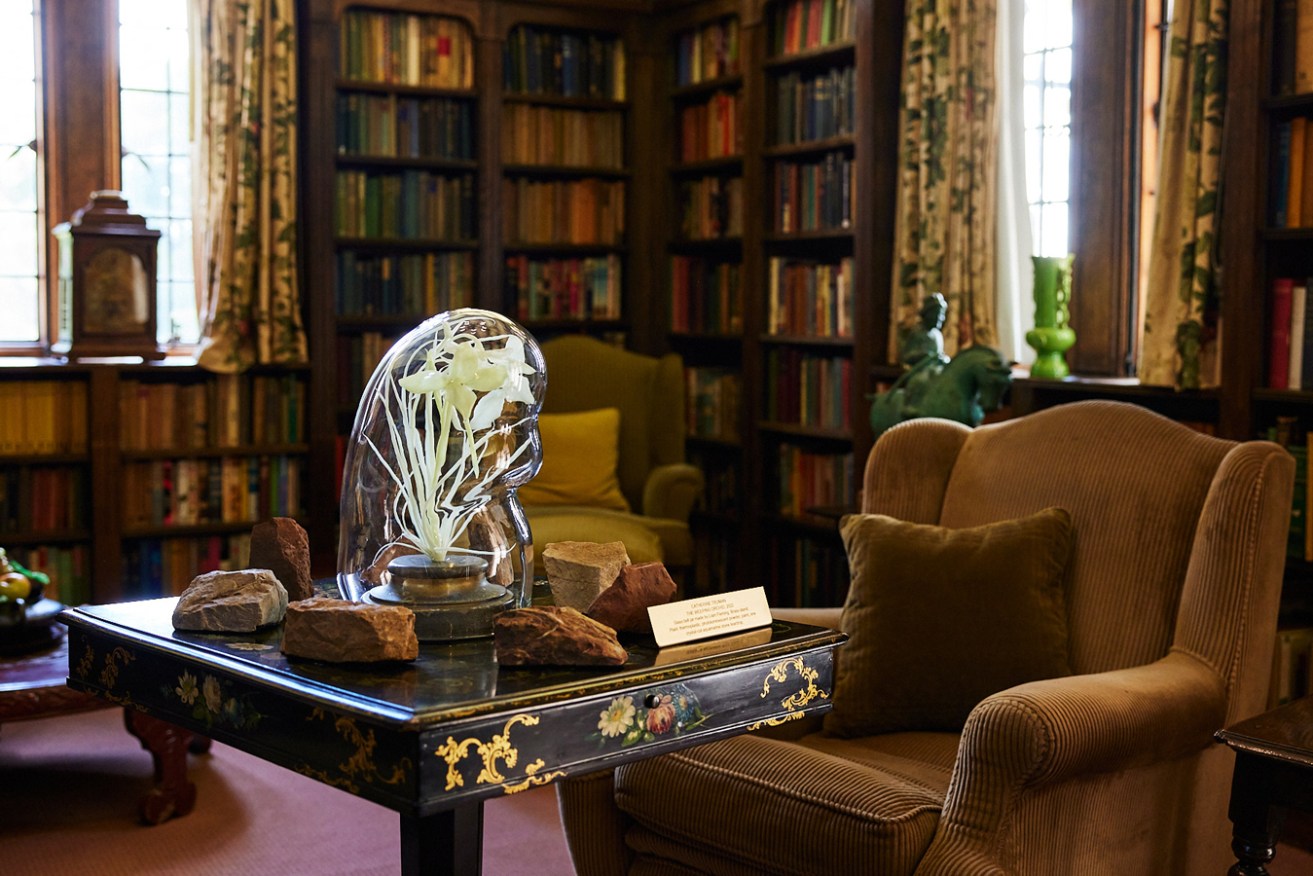
Catherine Truman's 'The Weeping Orchid' – in a bell jar blown by Liam Fleming – is right at home at Carrick Hill. Photo: Andre Castellucci
Catherine Truman: The arrangements: assembling nature
Carrick Hill
Catherine Truman’s assemblages, a response to her year-long residency at Carrick Hill, are placed alongside the extensive permanent art collection in rooms throughout the historic house. The works delve into the relationship of the garden to the house and the connection between plants, people and art by drawing on the past and present and looking towards the future.
Carrick Hill estate sits on the land of the Kaurna people and was once a dairy farm. The estate features extensive heritage gardens, and is surrounded by about 20 hectares of grey box (Eucalyptus macrocarpa) woodland. For Truman, the residency provided an opportunity to continue her interest in the relationship of gardens and plants to the broader issues of climate change and biodiversity. She did three months of intensive research at Carrick Hill, which included walking the grounds as much as possible – and not just the cultivated land but also the bushland.
Following the initial period of immersing herself in the environment, she returned to the studio to work on the artistic response to her research. By this stage, she had a greater understanding of the house and its surroundings and was able to place the works as she was creating them.
When you discover them in the different rooms of the house, Truman’s assemblages look as if they fit within the Carrick Hill collection. They were deliberately presented this way to emphasise that the history of the bushland can sit side by side with that of the historic house.
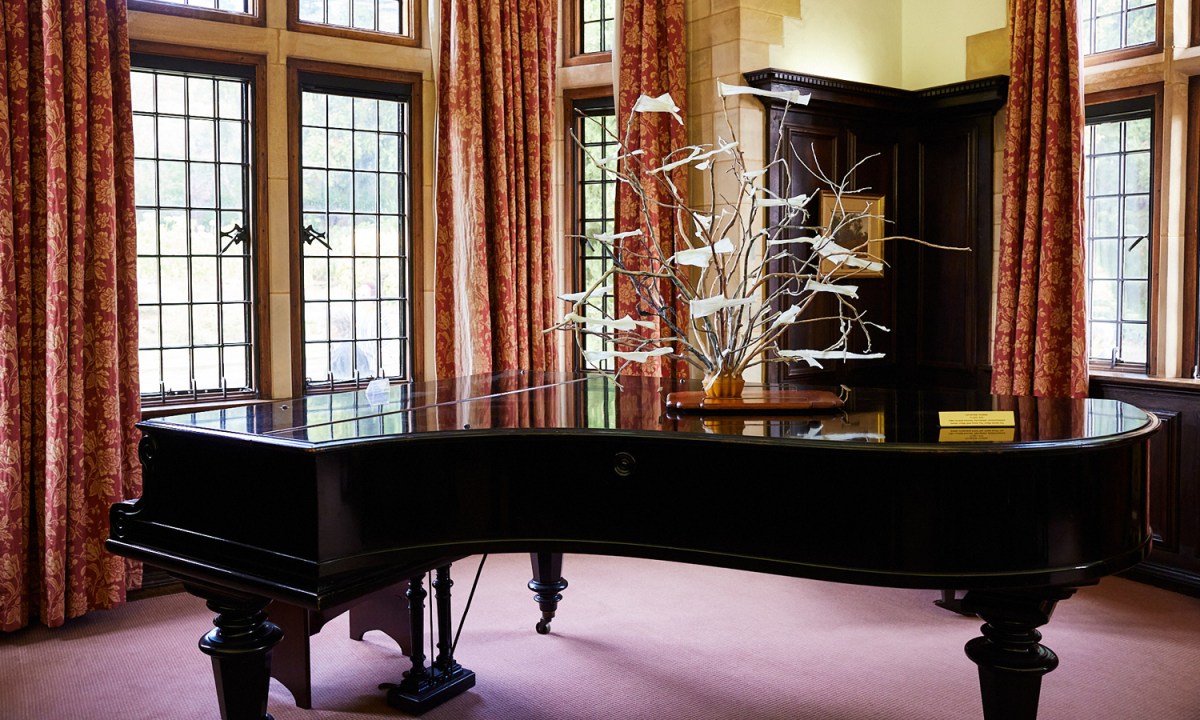
The Flood (eucalypt branches, thermoplastic, photoluminescent powder, glass frog, vintage wooden tray), on display at Carrick Hill as part of Catherine Truman’s The arrangements: assembling nature. Photo: Andre Castellucci
Rather than dismissing the site’s colonial history, Truman recognises it by looking at the relationship between art and nature through Bill and Ursula Hayward, for whom Carrick Hill was built. The couple moved into the home in 1939 and acquired an impressive collection of art and antiques which were bequeathed to the state along with the property.
Truman is particularly interested in how the Haywards lived with art on an everyday basis. Much of the subject matter of their art collection is flora, reflecting Ursula’s deep interest in plants and gardening.
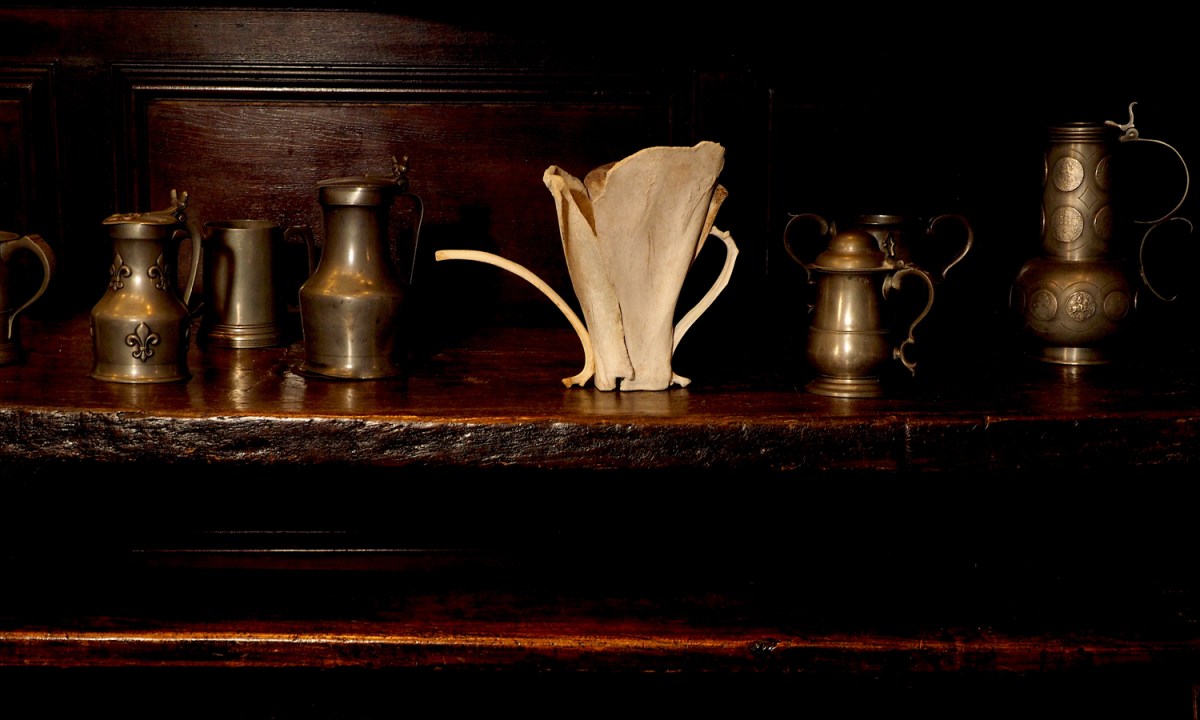
Catherine Truman’s Milk Jug (found dairy cow and kangaroo bones, polymer putty, paint). Photo: Grant Hancock
Through works such as Milk Jug and After Hans, made from found dairy-cow and kangaroo bones, Truman references past land use. After Hans is also influenced by Hans Heysen’s watercolour White Gums, which features in the Carrick Hill collection. The artist notes that both these works were also “made in response to the Carrick Hill estate being established on dairy farmland and unceded Kaurna land”.
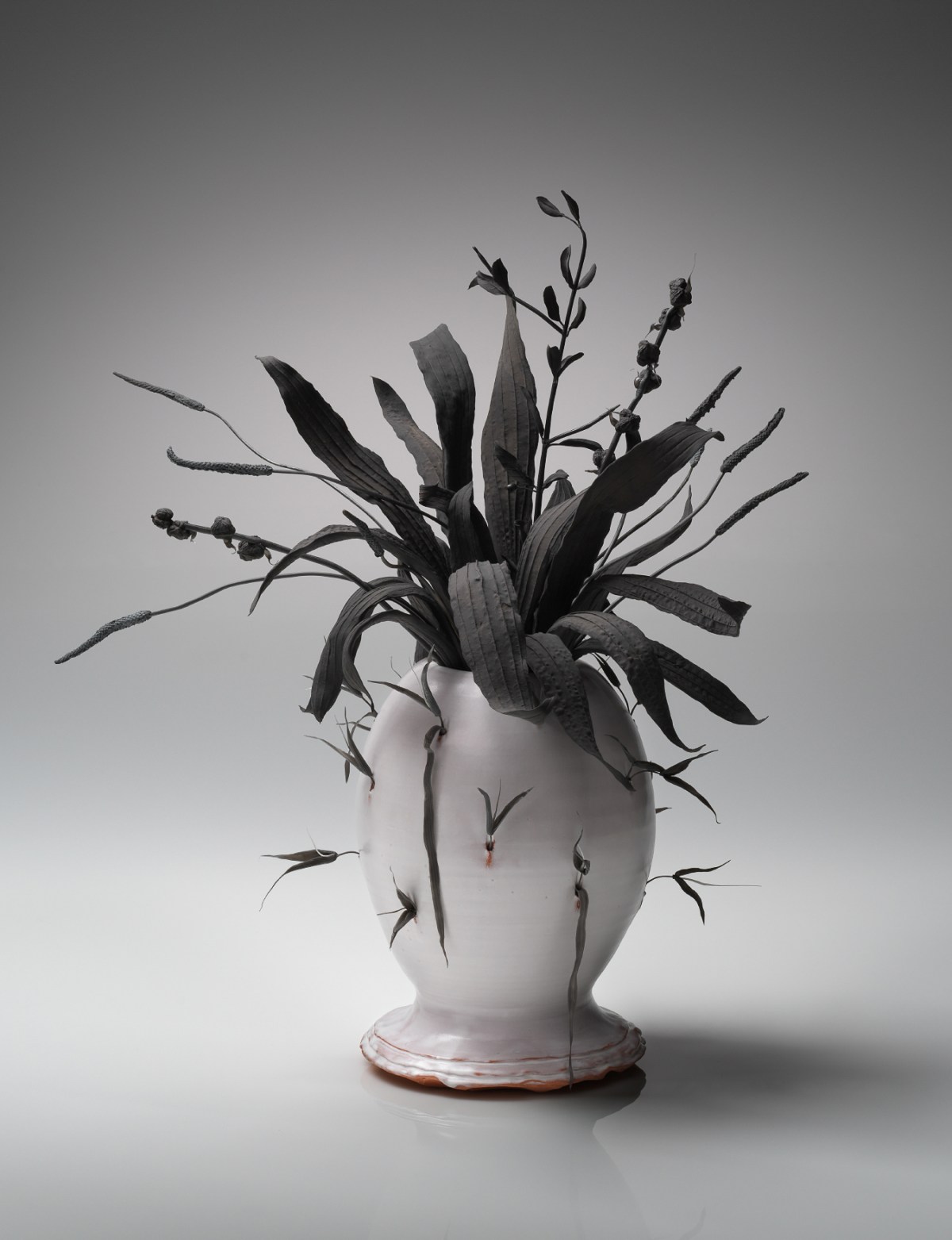
After Constance: the invaders (vase: terracotta with matt white glaze; plants: paper and cotton compound, thermoplastic, paint). Photo: Grant Hancock
Another standout work, After Constance: the invaders, is a nod to Constance Spry, a British pioneer in the art of floral arrangement. The piece reflects Ursula’s interest in horticulture and the relationship to the garden – the ritual of bringing the outside in – but in this instance, Truman’s arrangement is made up of environmental weeds commonly found on disturbed areas of the estate.
House museums such as Carrick Hill are often seen as capturing a moment in time, but Truman believes it is not static; there are symbols of the past and present, and also an indication of the future if you go looking. Through an evaluation of nature and our connection to it, her presentation connects the pre-colonial history to the site’s colonial foundations as well as to issues of the present day.
Truman suggests that having a greater understanding of the natural environment which surrounds the estate will help continue the historic house’s relevance in the future. The woodland contains several species of significant native plants and provides an important habitat for a number of bird species and other indigenous fauna. The grey box, which has recently been listed as an endangered eucalyptus species, helped save Carrick Hill from one of the many attempts at subdivision over the years.
Truman’s research and subsequent exhibition is just the starting point for thinking about the land we are on and its future.
“I can start conversations,” she states. “As an artist, I can’t come up with solutions but I can identify the gaps in our knowledge and we can talk about them. I think that’s what art should do: start conversations that are relevant to life now and relevant to life in the future.”
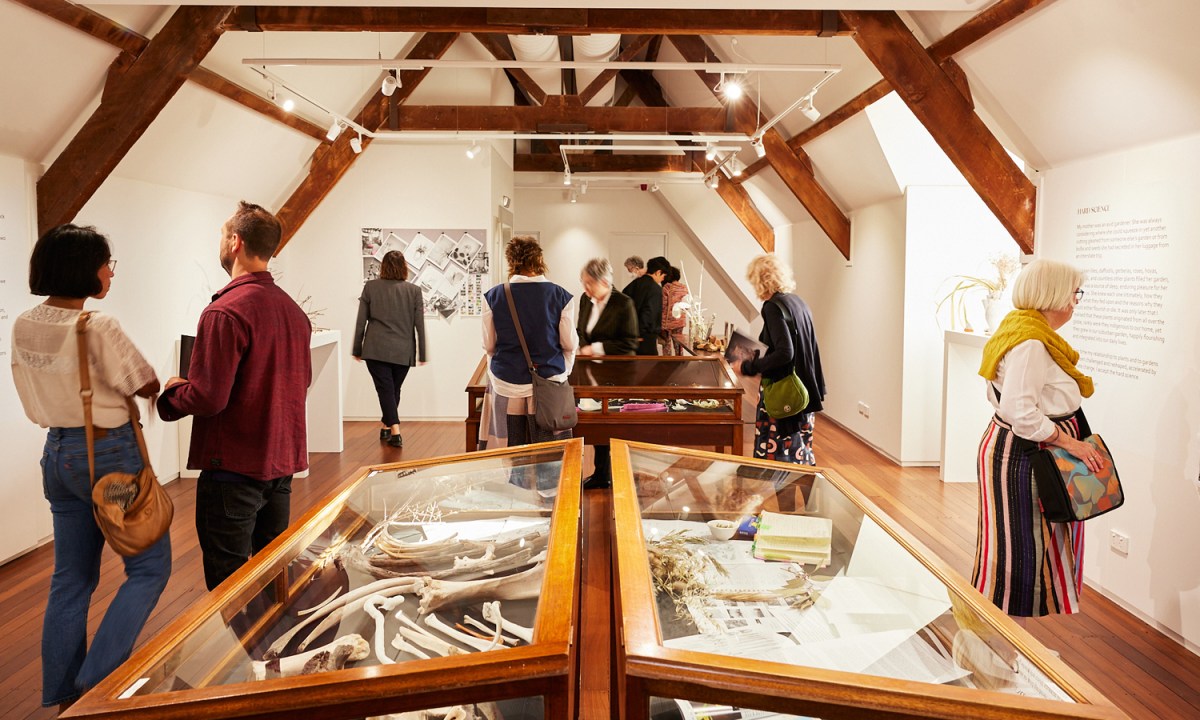
The Wall Gallery at Carrick Hill has been transformed into ‘The Assembly Room’, showing the inner workings of Catherine Truman’s project. Photo: Andre Castellucci
The arrangements: assembling nature is showing at Carrick Hill until May 28, and is presented as part of the 2023 Adelaide Festival program.
Read more Adelaide Festival coverage here on InReview.




